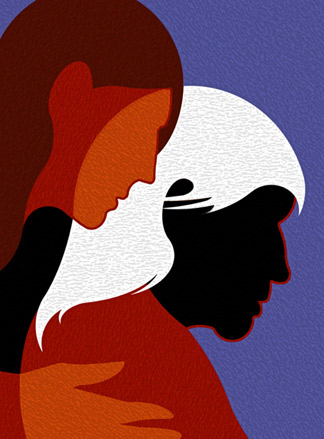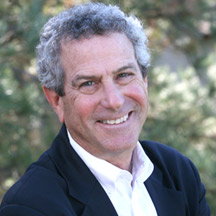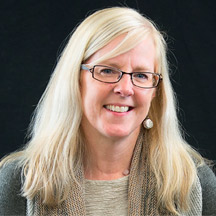 Death has this much to be said for it:
Death has this much to be said for it:You don't have to get out of bed for it.
Wherever you happen to be
They bring it to you—free.
—Kingsley Amis
Pop psychologists like to say that “gallows humor” is a defense mechanism, a way of avoiding what one might call the late unpleasantness (or the unpleasantness of one day having to be “the late”).
Amis’ doggerel is a nice rebuke to such condescension. The lines on the facing page are mordant, but they’re also defiant. Amis—a hectic novelist-drinker-poet-philanderer-essayist-dirty jokester-newsman—crammed a lot of living into his 72 years. He knew right down to his marrow that just because death gets the last word, it doesn’t have to get the last laugh.
Still, no one will argue that Amis’ chutzpah is universal, and not everyone wants to leave this veil of tears in a puddle of glee. (Ever noticed how rare it is that the poor sap in the noose is the one making with the gallows humor?)
Yet those who care for the elderly are acutely aware how much death has to be said for it. So why do so many seem to have trouble finding their voice?
Denial Ain’t Just A River
Consider:
■ In June, the American Heart Association released results of a survey of doctors, nurse practitioners, and doctors’ assistants at the Mayo Clinic. The association found that only 12 percent of providers were openly discussing end-of-life care with their patients. Another 30 percent said they didn’t have enough confidence in themselves to open the discussion, and 21 percent said they were afraid their patients weren’t ready for “the talk.”
■ A 2013 Dartmouth study found that 80 percent of patients would prefer not to spend their last moments in and out of hospitals or hooked up to cumbersome machines or being subjected to radiation or chemotherapy. Yet the Dartmouth researchers found that the number of Medicare patients who saw more than 10 different doctors in their last six months, and spent more time in intensive care, had jumped by 12 percentage points between 2003 and 2010.
■ Stanford researchers just published a survey of more than 1,110 doctors. The doctors reported overwhelmingly that even if their patients had issued clear instructions not to make heroic efforts to save them, it was “unlikely” that the doctors would use “less aggressive treatments.”
■ In that same Stanford study, the doctors also said—also overwhelmingly (90 percent)—that if they had a terminal diagnosis, they wouldn’t want any heroic efforts made to save them.
What is going on here?
‘Death Is Considered Optional’
It’s true that there is a broader cultural taboo about death and dying that one can sometimes taste as well as feel.
You don’t have to make any concessions to the Dr. Kevorkian style to notice that Americans, broadly, would rather make the entire topic disappear, burying it under a landfill of euphemism and schmaltz.
“Soon as I was in my forties,” the late, great George Carlin once riffed, “I’d look in the mirror and I’d say, ‘Well, I guess I’m older.’ ‘Older’ sounds a little better than ‘old,’ doesn’t it? Sounds like it might even last a little longer. Bull—, I’m getting old. And it’s okay. Because thanks to our fear of death in this country, I won’t have to die: I’ll pass away…”
It was public health expert and self-described futurist Ian Morrison who, having grown up in Scotland, trained in Canada, and practiced in California, noticed a few cultural differences.
“In Scotland,” he says, “death is considered imminent; in Canada, it’s considered inevitable. In California, death is considered optional.”
(And, indeed, the people of Los Angeles County lead the nation in the amount of medical services taken in the last six months of life. Even healthy Angelino elders get about 65 percent more MRIs than their peers and take three times as many ambulance rides as other seniors.)
‘How Honest Do You Want To Be?’
But not all caregivers’ problems with death and dying can be blamed on society. Look again at that Dartmouth study. If death is so taboo, where did that 80 percent who didn’t want a medical-intensive death come from? (And then there are the cultural artifacts, like messages in a bottle, that occasionally pop up and make one wonder whether Americans are really all that immature about The Big Sleep. (
See “An Undertaker Saves a Life.”)
No, providers themselves have their own struggles with the D-word.
■ In March, a study by Canadian researchers found that at least 30 percent of long term and post-acute care workers thought their jobs were depressing. The closer one got to patient care, the more acute the anxieties and depression were, so nurse assistants were reporting a lot more problems with death than, say, administrators.
■ In June, University of Oregon researchers found that more than one-quarter of hospice patients (!) were taking antibiotics in their last few days; more than one in five hospice patients were discharged from the hospital into end-stage care with a script for antibiotics, despite not having a documented infection, the researchers found.
“It’s a real professional dilemma,” says Peter Rabins, MD, a professor of psychiatry at Johns Hopkins University’s medical school. “How honest do you want to be?”
A Spiritual Problem
Ira Byock, MD, author of “The Best Care Possible,” is the newly minted chief medical officer of Providence Health & Services’ Institute for Human Caring. He thinks that the way most Americans die “is a disgrace, frankly.”

“I think American health care approaches illness and dying and grief through the wrong lens,” he says. “We think of death and dying as a medical problem. That puts it already, fundamentally, on the wrong track. Because people who are seriously ill and dying obviously have medical problems, but the overwhelming thing about illness, dying, and grief is that it’s a spiritual matter.”
It is a glory of the modern age that Americans are living longer and healthier than ever before, Byock says.
“Yet the fact is, we haven’t made a single person immortal,” he says.
“If all you do is push back against mortality, at some point, the person or the patient is going to feel squished between our efforts to keep them alive and their own sense of mortality.”
See "
Death, To Nonbelievers."
Age-Old Problem For Old-Agers
It’s not like this is a new problem.
It was Cicero who, while noticing that to study philosophy was to study how to die well also,
noticed that there’s only so much the doctors can do.
“Indeed,” he said, “as physicians, while curing the whole body, apply their remedies to even the least part of the body if it is in pain, so philosophy, when it has removed grief in its entireness, continues its work …”
Still, many experts say that, if people are harming each other with euphemisms about death and grief, they can help one another by talking honestly, openly—and often—about death.
‘We Deal With The End Of Life’
“There are good deaths and bad deaths,” says Judah Ronch, PhD, dean of the University of Maryland, Baltimore County’s Management of Aging Services program.
“We, as a long term care world, have to look in the mirror and say, ‘We deal with the end of life.’ If we make it as comfortable as it’s possible to be, then we’ve done our job.”
Indeed, mere honesty can have seemingly miraculous consequences. In July, for instance, the Journal of the American Medical Directors Association reported that open discussions of advance care planning led not only to more advance directives, but to better communication among staff, family, and residents and—best of all—the kind of end-of-life care that the residents themselves asked for.
Counterpoise those findings with the earlier Canadian study of attitudes toward death among nursing home staff. Nearly three-quarter of staffers found themselves in conflict with families as their loved ones prepared to die.
The Many Faces Of Grief
Half of the paradox of grief is that it’s really, really simple.
“Human beings do that all the time,” Ronch says. “You don’t have to teach them how to grieve.”
The other half of the paradox is that grief is also really, really complex.
“When somebody dies, there’s a loss—you know it,” Ronch adds. “But when there’s a diminishing of vision, loss of hearing, loss of mobility, loss of physical resilience—those are things that come with aging. People are aware of it, and they know it’s happening. Losses need to be grieved.”
People grieve in different ways, on different schedules. Families of those afflicted by dementia, for instance, will grieve the person they’re losing long before she dies; for staff, though, the death of a resident with dementia can be devastating, Johns Hopkins’ Rabins says.
“I think, often, the frontline staff who are providing the day-to-day care and who have worked with the person—sometimes for several years—they often seem to have more of an emotional attachment than even the family,” Rabins says.
“Perhaps because they’re living with the person every day and they interact with them so intimately, they often have more sense of the remaining personhood than the remaining family members.”

Deborah Bradley is the director of spiritual care at St. Crispin Living Community in Red Wing, Minn. She’s spent her life trying to help people manage their grief. Among the things she’s learned is that grief is both imminent and inevitable—but certainly not optional.
“It’s a long, difficult process for people,” she says. “But it’s a part of life. It is a part of the life spectrum.”
There are lots of routes through death and grief, Bradley says (
see “A Good Way to Die”). But the first step is always—always—to be open about it: with families, with friends, with co-workers, with employees, with residents. Not just to listen to them about how they’re feeling, but to be honest about how you’re feeling, she says.
The second step is to realize that there is no wrong way to grieve.
“When we’ve had people in our lives for years and years and years, they’ve become a part of the fabric of our lives,” she says. “And so it doesn’t matter if it’s one week, or one month, or three years: Your body needs time to catch up to your brain, to understand that the person in room 302 at the long term care facility isn’t going to be there, ever again. Someone else is in there.”
“We tell ourselves, we should be over this by now and we give ourselves a timeline,” Bradley adds. “And it’s really unfair to ourselves and others. This isn’t a contest.”
Bradley likens grief to a rattlesnake bite. “That venom is on the top, and it’s starting to destroy the tissue and the flesh,” she says. “And if you can get that venom out, then the healing can start.”
‘All I Shall Do For Death’
Providence Health’s Byock says he finds it odd that death is so divisive an issue for people.
“Despite all of our diversities and differences, that one’s a constant,” he says. Everybody is born; everybody dies.
“The people who die well … have used this opportunity—this unwanted, difficult opportunity—to get a sense of things left undone, or looking at mending fragmented or broken relationships,” he says.
“We’re here to help them in a very difficult and very personal struggle to feel complete at the end of their lives.”
As things stand, death gets everyone. But that doesn’t mean it must conquer everyone. Those who fight to die well (or fight for others to die well) understand that paradox. To pretend that things are otherwise is to let death not only have the last word, but the last laugh. And, really, doesn’t death have enough friends as it is?
“I shall die,” Edna St. Vincent Millay famously wrote, “but that is all that I shall do for Death.”